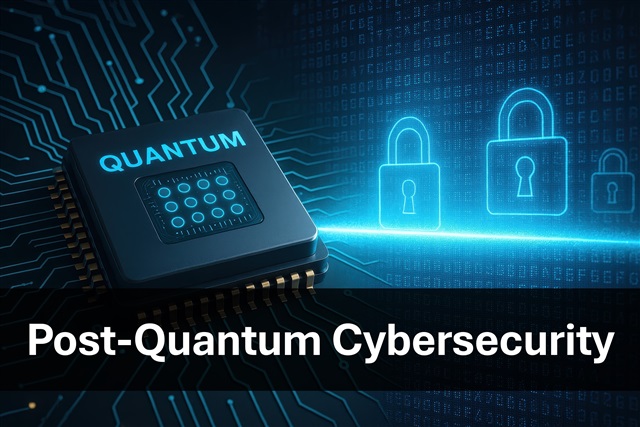The development of quantum computing is fundamentally reshaping the rules of cybersecurity. Traditional public key encryption mechanisms, such as RSA and ECC (Elliptic Curve Cryptography), rely on the complexity of problems like prime factorization and discrete logarithms for their security. However, what is extremely difficult for classical computers to break security could be effortlessly solved by quantum computers.
Background and Challenges of Post-Quantum Cryptography (PQC)
This is no longer a distant threat. Tech giants such as Google, IBM, and Intel have already demonstrated prototype quantum processors and continue to expand their qubit performance and maintain system stability. While today's low-qubit quantum computers still cannot break commonly used encryption algorithms in real-time, the cybersecurity community has already entered a stage of "quantum defense" deployment.
For government agencies and critical infrastructure, this is an urgent concern. The US National Institute of Standards and Technology (NIST) has launched a Post-Quantum Cryptography (PQC) standardization project and announced the first batch of selected encryption algorithms in 2022. This signals that enterprises and device manufacturers must begin considering long-term protection strategies for firmware, data, and keys under quantum threats.
Challenges in the PQC Transition: Firmware and Storage Devices at the Forefront
In many systems, sensitive data and cryptographic keys are often stored in external non-volatile memory, such as SPI NOR Flash. For example, in embedded devices, servers, and network equipment, these components are responsible for storing firmware and critical decryption keys. Once compromised, the entire platform's trust foundation is at risk.
However, most external memory on the market today only offers basic write protection and lacks features such as active encryption, region-specific authorization, or key management capabilities - let alone the computational support and security architecture required for increasingly complex PQC algorithms.
In addition, many devices face the following challenges:
*Difficulty integrating PQC validation and secure storage mechanisms into existing architectures
*Lack of storage components that support multi-stage firmware validation and regional isolation
*Firmware storage areas are susceptible to forgery or rollback attacks by adversaries.
Therefore, integrating "Secure Flash that meets PQC-era requirements" into existing systems has become a critical step in advancing cybersecurity.
Winbond TrustME Secure Flash - W77Q: A PQC-Ready Security Solution
In response to trends in post-quantum and firmware security, Winbond has developed the TrustME Secure Flash - W77Q series. Designed specifically for Platform Firmware Resiliency (PFR) and hardware-based root of trust, the W77Q also supports the hash-based LMS (Leighton?VMicali Signature) post-quantum signature algorithm, providing a complete and robust security solution for device manufacturers.
Highlight 1: Multi-Level Access and Key Management
W77Q implements hardware-based region-level access control and key authentication systems. It enables the creation of multiple independent memory partitions, each configured with its own dedicated key and encryption rules. This is especially important when integrating PQC encryption workflows, and supports:
*Independent hardware verification of each firmware stage (Pre-boot, BMC, UEFI, etc.)
*Protection against rollback attacks
*Restriction of access to specific memory regions (enforced for authorized users only)
This architecture not only protects existing firmware structures but also provides a secure and scalable framework for integrating future PQC key management.
Highlight 2: Mirror Design with Auto-Recovery Support (PFR-ready)
W77Q features a built-in Recovery image region and supports automatic switching and verification. If the primary firmware becomes corrupted or fails validation, the system can automatically switch to the Golden Image without external intervention, achieving Platform Firmware Resiliency (PFR).
This design aligns with the established Protect?VDetect?VRecover architecture is defined by NIST SP 800-193 and integrates seamlessly with major platform root of trust implementations.
Highlight 3: LMS Key Pre-Provisioning and HSM Injection to Strengthen Supply Chain Root of Trust
In addition to its built-in secure zones and key management capabilities, W77Q supports the pre-injection of LMS post-quantum key pairs. Winbond can assist OEMs in securely embedding LMS public-private key pairs during wafer test or pre-packaging stages, ensuring each device has a unique and traceable cryptographic identity.
The injection of the LMS private key is particularly important: it allows for secure device attestation and traceability. By embedding a unique private key within each W77Q device, only the original device can generate valid LMS signatures. This enables downstream systems to verify both the authenticity of the device and the integrity of its firmware, ensuring that only authorized firmware is executed and that the device is genuine. Such traceability and attestation are essential for establishing a robust root of trust throughout the supply chain, significantly enhancing cybersecurity and mitigating risks of device cloning or unauthorized firmware modification.
Furthermore, Winbond supports key injection using Hardware Security Modules (HSMs), offering stronger key protection and verifiable injection processes. This functionality enables customers to establish a secure root of trust during chip manufacturing and assembly, further enhancing supply chain security.
A One-Stop Secure Storage Solution to Accelerate the Adoption of Future Security Architectures
The true value of W77Q lies not only in solving the "secure memory" problem, but also in addressing many of the supporting tasks developers would otherwise have to manage themselves:
*Ready-to-use APIs for easy integration with firmware verification workflows
*Secure key storage and region-level access control are handled by W77Q hardware, saving host resources
*Support from a full-fledged security team to provide ISO 26262 and NIST PFR compliance documentation and test reports
*Pin-to-pin compatible with standard SPI Flash - no need for additional hardware space, enabling low-cost integration
By supporting both ISO 26262 for functional safety and ISO/SAE 21434 for automotive cybersecurity, W77Q helps manufacturers address both safety and security compliance requirements in modern embedded and automotive systems.
For teams looking to implement functional safety, PQC, or platform firmware resiliency, this is an ideal "security accelerator."
Conclusion: Secure Flash Is the First Line of Defense in the Post-Quantum Security Era
With the rollout of NIST PQC standards and the ongoing progress of quantum computing, device manufacturers and system integrators can no longer ignore the risks at the firmware level. Winbond's TrustME Secure Flash - W77Q series offers more than just memory - it provides a foundation of trust that supports system evolution, compliance, and long-term security maintenance.
Whether you're an embedded platform developer or a module designer in automotive or industrial control sectors, adopting next-generation Secure Flash aligned with PQC and functional safety standards will be a key step in your cybersecurity transformation journey.
To learn more about Winbond's advanced security solutions, visit Winbond's website, contact Winbond directly, or download the latest Hardware Security White Paper.




